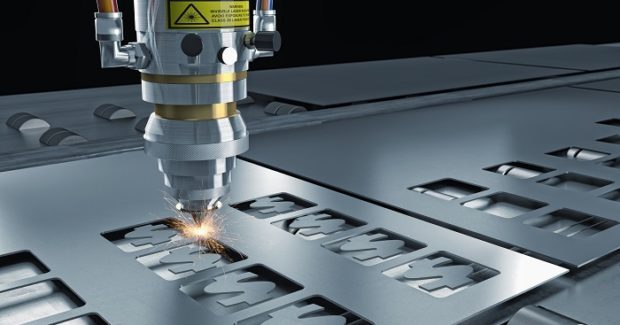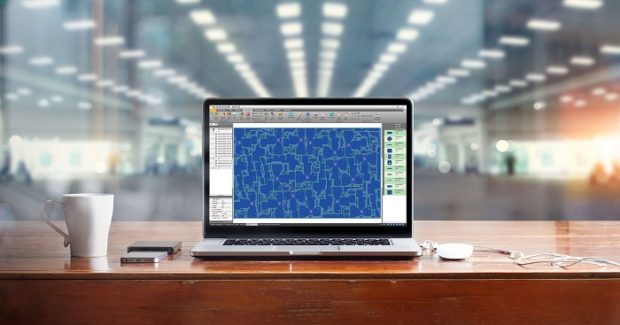Yes, You CAN Automate Without a Robot
The average shop taking their first steps into automation doesn’t need to break the bank by investing in lights-out production with advanced robotics. There is a simpler, less expensive way to impact your bottom line.
Posted: February 14, 2019
Robots capture our imaginations by their precise and perpetual motion. Combined with dreams of a “Jetson-like” life, free from the drudgery of menial tasks, they stir imaginations of an artificial lifeform wandering around the shop floor, sweeping up spills, unloading press brake parts, carrying heavy remnants back to the storage racks, never complaining or calling in sick. As the robotics revolution sweeps through the metalworking industry, how does the average fabrication shop begin to realize the potential it offers?
THINK “AUTOMATION” RATHER THAN “ROBOTICS”
Installing an industrial robot in your factory probably sounds exciting and cutting edge. But a better way to begin benefiting your shop is through automation: completing a procedure through some type of system that minimizes human intervention. An analysis of your current processes will likely reveal workflows involving significant amounts of repetitive and monotonous work by your employees. Start by investigating the most basic “robot,” which is simply an automated process. For example, I worked with a job shop that processed dozens of quotes every day. Their sales specialist received the RFQ and then forwarded the drawings to the engineering department, where engineers opened their nesting program, imported the drawings, developed the parts, nested them and created a report that showed the nested cost per part. The engineer then emailed the quote report back to the sales agent, who turned that report into a quote to send back to the prospective customer.
A small investment in process analysis and automation greatly improved their workflow and resulted in less repetition of tedious tasks, faster turnaround for quotes, less problems for customers and the company – with happier employees and clients. This new process requires the sales specialist to drop the drawings into a folder on the server. That’s it. Automation then takes over: Transaction Manager software constantly monitors the folder and automatically imports drawings, creates and nests parts, produces the quote report, and emails the report back to the sales agent. In a few minutes, every RFQ – accurate, efficient, timely and easy – is ready to send to the potential customer. No physical robots are involved, but this automated process quickly impacted the bottom line and yielded more satisfied employees and customers.
TAKE A REALISTIC FIRST STEP
Think about the success of the Roomba. This robotic vacuum cleaner is not the same as Rosie, the robot who cooked all of the Jetsons’ meals, cleaned their whole house and cared for the children. Roomba does one job autonomously, and does it well: on a timer, it leaves the charging station, vacuums the room and returns to the charging station. Simple and useful. In metal fabrication, advanced robots can pick parts, slide them into a press brake, move carefully to adjust as multiple bends are added, and then deliver the completed part to the stacking table. But for the shop that is taking their first steps, a scaled down version can provide great benefit. After you complete your process analysis, think about ways to improve one clear, simple part of your workflow.
For example, I worked with a custom spa cover manufacturer whose production begins with the many parts used to make a cover sent to the shop as nested tasks. These parts are then knife cut from large rolls of vinyl. With production of around 200 spa covers per day and six knives cutting parts, imagine the many thousands of vinyl parts piled up on the shop floor. The solution? An overhead conveyor system allows knife operators to collect the parts for one spa cover and clamp them to an overhead belt (with the proper paperwork) that sends the set to the sewing station queue. Like the Roomba, this simple and practical application of the first step of automation/robotics did one job well, making a significant impact on the bottom line.
TARGET SOFTWARE RATHER THAN HARDWARE
A final key to quickly benefit from automation/robotics comes from a focus on software. When I hear the word “robot,” my mind pictures a machine that looks like a human and costs way more than a college education! But quick and significant benefits in automation for the shop floor come mostly from software, not hardware. Well-designed software solutions provide significant return on investment. Consider the common, simple, yet powerful software automation that happens every day in fabrication shops: Orders are received from customers and entered into an ERP or MRP system. This order is then parsed by transaction manager software that automatically creates parts and orders inside the nesting software. The user then creates cutting programs for the shop floor by grouping the different orders from different customers into common tasks based on machine, material, and thickness. The result of this simple software automation is reduced paperwork, improved order accuracy, increased employee job satisfaction, savings on material and labor, and more customer deliveries that are on time and under cost.
















